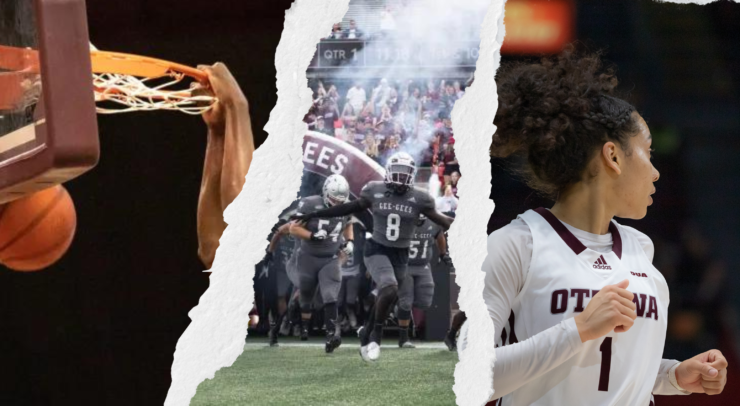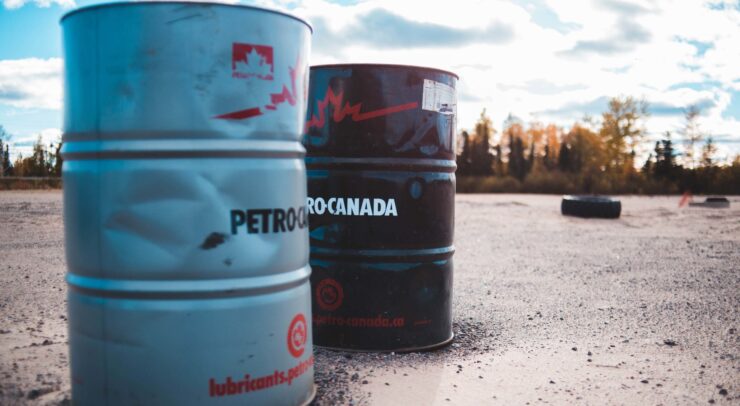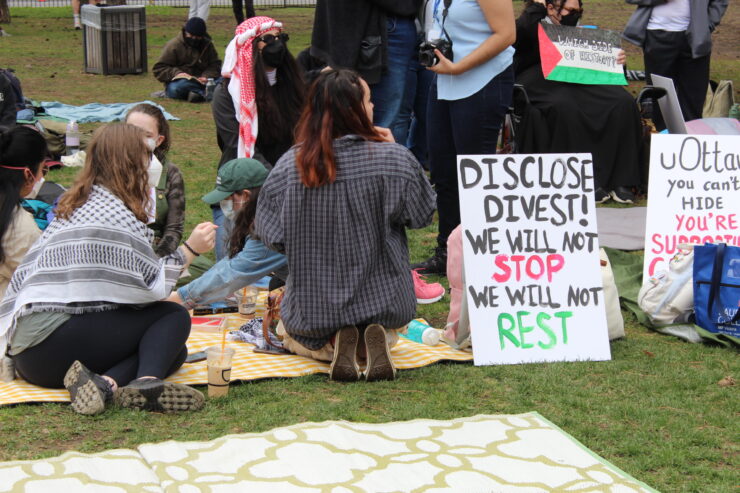What exactly constitutes a protest?
For several weeks in late January and in February, many residents of Ottawa struggled to navigate life amidst a pandemic in a city under siege. The month-long so-called ‘Freedom Convoy’ protest disrupted life in the downtown core of Ottawa. It resulted in significant lockdowns, road closures, traffic blockages, and police checkpoints, in addition to the constant honking, crowding, partying, and roughhousing.
While the city is mostly back open for business, many residents are questioning the legitimacy and efficiency of the ‘Freedom Convoy’, which brings us to the question: what makes a protest a protest?
A 2016 study, defined protests as “a legitimate and necessary way for communities to seek redress for issues that are ignored by decision-makers,” noting that “protest action can take many forms (e.g. blockades, rallies, boycotts) constituting a repertoire of contention, which is subject to continuous innovation.” While many of us may associate protests with the stereotypical imagery of crowds shouting and hailing decorated signs, there are many different approaches, especially in the modern era of technology and social media.
In Canada, many successful protests have employed primary forms of community engagement such as marches, banners, and sit-ins to lobby politicians and rally support without resorting to harassment and full-fledged occupation. Most notably, Greenpeace Canada, an environmentalist non-government organization (NGO), coordinated with other independent organizations to peacefully protest the Energy East tar sands pipeline until TransCanada cancelled the project in 2017.
Sam Hersh, an activist and political organizer on the Board of Directors for Horizon Ottawa, said in an interview that protests are intended to challenge the status quo.
“Both the right and the left [wings of the political spectrum] can protest whatever measures they are dissatisfied with,” said Hersh. “However, protests that challenge the state’s power are more of a threat. Protests that have the power of police on their side don’t really do that in the same way.”
While the media has negatively highlighted some protests for their use of force and violence, there are some instances where violence may be necessary to the cause. “The Haitian Revolution is a great example of protestors resorting to the desperation of violence to free themselves, but violence is never justified when used to harass innocent people,” said Hersh.
The recent occupation of Ottawa by the ‘Freedom Convoy’ protesters was quite the opposite of a peaceful protest. The significant disruptions and blockades ultimately led to Prime Minister Justin Trudeau invoking the Emergencies Act for the first time in Canadian history.
While some residents believed the government was being too lenient with the protesters, others felt their rights were being infringed upon. So what is the limit for the amount of disruption, use of police resources, and degree of violence that must occur before a protest is deemed unjust? And who makes that decision?
As a democratic nation, Canadians have a legal right to protest and engage in acts of public dissent as protected under ss. 2(b) and 2(c) of the Canadian Charter of Rights and Freedoms, which grants citizens the freedom of peaceful assembly. However, Canadian police officers must ensure protests remain peaceful and not incite violence or hatred against marginalized groups.
Many scholars were quick to conduct research amidst the ‘Freedom Convoy’, including Joao Velloso, a University of Ottawa law professor who has conducted extensive research into protests and criminal justice.
“I live in Ottawa; I see protests every day. Protests are business as usual here. But when I saw the police intervening with protesters, welcoming them to Ottawa, and suggesting places to park, that’s what put this on my radar,” said Velloso. “What was so puzzling about the ‘Freedom Convoy’ was that they didn’t believe they were breaking the law. For example, Indigenous groups aren’t trespassing when protesting on their land. They have Indigenous laws and treaties on their side,” he added.
Velloso spoke with some of the Convoy protesters. “They were pretty much saying they were doing nothing wrong, that it was peaceful and all about love. To a certain extent, they have this perception about not doing anything wrong because police have enforced this perception,” he said.
Despite the protesters’ belief that no harm was being done throughout the city’s occupation, reports of harassment, assault, and even attempted arson were increasing by the day with little to no police intervention.
Many Canadians criticized the government for not cracking down on the ‘Freedom Convoy’ protesters sooner and with a heavier hand. Given the ferocity of police retaliation against Indigenous protesters in the past, many observers began to draw stark contrasts between the government’s response to protests led by racialized communities and the ‘Freedom Convoy’.
Randy Boswell, an award-winning journalist, news reporter, and professor at Carleton University, spoke with the Fulcrum about the nature of the ‘Freedom Convoy’.
“It is possible to have a peaceful protest that is disruptive. Disruption may be okay. What’s not okay is what happened here in Ottawa. That was aggressive intimidation and occupation,” he said.
“Over the last number of years, there have been major clashes between protesters and police and concern that police were far too rough with protesters. The strategy now has been to deescalate situations and avoid the terrible confrontations that lead to civilians being mistreated by the police. But, there should have been a stiffening of police behaviour when it turned from a protest into an aggressive occupation. It was clearly illegal,” he explained.
Many police officers vocally supported and participated in the ‘Freedom Convoy’. “It raises the question ‘when they’re financially supporting the occupation, can they do their duties as a police officer and protect the public?’ ” added Boswell.
“Out of 1,000 police officers, you will have 50 of them who support the alt-right. It’s a long way before police represent the diversity of our society,” he said. “It’s fair to say that there would have been a lot less tolerance if this protest was conducted by Indigenous protesters, forest defenders, and social justice advocates.”
Numerous BIPOC-led protests have been unjustly policed in Canada. For example, in November 2020, the “Defund Police” protest organized by Black, Indigenous, and people of colour activists and community members was brought to a halt less than 36 hours after it began. Police and city officials arrested 12 protesters in the night and forewent the negotiations set to take place the following morning.
The police response to Indigenous blockades on Wet’suwet’en ancestral lands was even harsher, wherein RCMP officers were ordered to “sterilize the site.” Canadian police organized a militarized raid in full riot gear and armed with assault rifles to combat the land defenders protesting the Coastal GasLink Pipeline.
Considering that the ‘Freedom Convoy’ occupation involved protesters setting up temporary lodging, bouncy castles, and a concert stage while blockading Ottawa for over three weeks, there seem to be some inconsistencies in the authoritative resistance and government action towards protesters.
“The police exist to uphold and defend white supremacist systems because they’re a part of that institution,” said Hersh. “We have to look at creating alternative modes of safety moving forward, things like mutual aid, community defence, and networks to report hate crimes that don’t involve the police. Diversity of tactics is important.”





